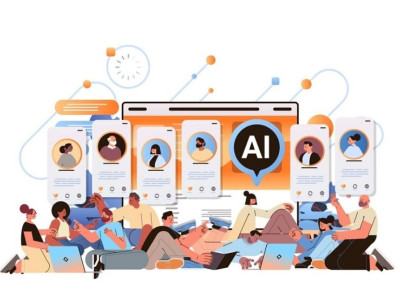Amid call for DigitAll, tech continues to see strong skew towards males
Although women are proving their capabilities in every field, the tech industry is one area where the gender gap is a significant one. According to a report by Dublin-based niche recruitment company, Next Generation, in leading tech companies the general makeup of staff across all roles show an overwhelming male majority. Amazon has 63% of male participation, with only 37% of women participation. Apple, Google and Twitter showed 70% of male employees and just 30% of women employees. Social media applications like Facebook and Instagram represented 69% male, while women representation stood at 31%.
In Part 2 of this report, Adgully will explore why there aren’t more women in the tech industry, the possible reasons behind this, as well as the required skill upgradation in this field.
Also read:
Part 1: The changing face of women leadership in Digital and tech industry
Speaking about the challenges, Deepa Krishnan, Director- Marketing,Category, Loyalty and Digital, Tata Starbucks, said, “Considering that women are the primary caregivers in our society, they face multiple challenges such as taking care of work and home simultaneously and multi-tasking to a greater degree to achieve personal and professional goals.”
She added, “We at Tata Starbucks try to ensure that our partners (employees) never have to choose between work and home. Since 38% of our workforce at Starbucks is women, including women in leadership roles, we have tried to create a balanced environment where everyone feels comfortable and welcomed. Our programs offer flexible employment options, including a 5-day work schedule, access to Women’s Impact Network, extended maternity and sabbatical leave, as well as mentoring and accelerated development programs for key talent. Our All Women stores – a global first initiative – act as a medium to challenge the myths and stereotypes around women’s capabilities in leading café/ restaurants.”
Krishnan further said, “We see technology as a great leveller, it offers women flexibility and access. There’s a rising number of women in technology and innovation working at the forefront, driving change and creating solutions for a more equal world.”
Giving her perspective on the gender gap in the tech industry, Tarunjeet Rattan, Managing Partner, Nucleus PR, explained, “Google images for ‘Men in Tech’ and ‘Women in Tech’ and you will find real names from the industry on the first picture in the first search compared to the second or fifth or sixth line for the latter. While populating the web with dummy images is fine, in today’s tech savvy world, where are the real women in tech that others entering in the field can seek inspiration from and know that there is so much they can do to and reach the absolute top without letting their own biases get to them? There is so much to be done. And it will be a collective effort. A lot of the uncredited work done by women is available now for people to read, but a corrigendum only got you so much. Today, women struggle with fewer opportunities along with societal biases that the lack of role models plays into diminishing their numbers further as they move up the ladder.”
Speaking on the root cause behind this gender gap, Anita Devraj Mookherjee, Head of Brand, Turno, noted, “The prejudice begins at an early age – more often than not, it is the family that prevents girls from pursuing STEM careers. As an active career counsellor for high schoolers, I see a lot of girls interested in Technology and Engineering, but are actively being coaxed by their families to take up a more ‘manageable’ career. Cultural biases like girls should pursue humanities or creative & liberal arts are prevalent even today. Careers in technology are perceived to be tough. And who do these girls have to look up to as role models? The systemic bias that exists in the workplace today also discourages women from applying for positions that are considered ‘not for them’.”
Whereas Meenakshi Cornelius - CHRO, JLL India believes, "There is an ideal woman image One for All – a hard working professional, a nurturing mother, a caring daughter and daughter-in-law and a supporting wife. One of many restraints I have understood is family responsibilities like getting married, motherhood or about caring for parents and for older children. Been in a care giver role has overwhelmed them without much support and with very few women role models who have done things differently they lack the motivation. Another pressing cause is the Gender equality, 38% of women leave the technology industry within two years in the technology industry, while the momentum may be due to various reasons like compensation, career growth and other organizational policies, etc., most women are seen leaving the industry due to lack of growth in the leadership roles. Other reasons that count in are unconscious bias in hiring, lack of equity in opportunities available to women, fewer assignments to higher visibility projects, not enough skill development and resources and support available to women in tech industry."
According to Zaiba Sarang, Co-founder, iThink Logistics, one of the reasons is a lack of role models for females to look up to in the field of technology, as women are under-represented in this field, making it difficult for women to see a clear career path in this industry. “As much as we dislike to admit it, there are still gender stereotypes and biases that we see, as a result of which women are discouraged from pursuing careers in technology, and we can see biased hiring or promotion decisions. It also creates a hostile work environment for women, making it difficult for them to succeed,” she added.
Unnati Gajjar, Head of Marketing, Hanu (an Insight Company) also believed that the lack of representation of women in innovation and technology results in a gender gap in this field. She also highlighted certain other issues:
- Access to the right kind of job: India tops the world in producing female graduates in STEM. While more Indian women are graduating, there are few who join the workforce. According to the Centre for Monitoring Indian Economy Pvt, only 9% of the eligible population is employed or looking for a job. About 21 million exited the labour force entirely, particularly women because of not being able to find the right kind of job. This certainly is a problem to be dealt with on multiple layers – creation of white-collar jobs, outreach to missed out workforce and more importantly creation of platforms for equal accessibility. Many tech companies like us run university outreach programs connecting with the graduates directly. We also associate with platforms like Generation.org that brings about equal access to employability for people from different walks of life.
- Lack of growth: Traditionally, a woman’s career is viewed as short-lived while compared to their male counterparts. Hence, a lot of roles have inherent biases against promoting women leadership in them. Such roadblocks to growth have been common but now fading. Companies are making a conscious effort to build out career paths with equal access and representation. There are training and mentorship programs to guide women to grow further in their career. At Hanu we have special upskilling programs for women who want to restart their career or are returning to work from a break.
- Cultural aspects: Many traditional industries still have corporate workplaces that perceive women restricted to certain roles only. There are only a handful of industries that have been able to achieve an unbiased view towards women. We must address these pervasive prejudices and barriers to achieve gender equality in all the domains.
Apart from these, there still remain deep-rooted problems of not having pay parity, work-life balance and desired career advancements that discourage women from working.
“Changing the gender mix in the technology industry, especially in leadership positions, requires a cultural shift that begins with recognising the value of having women in leadership roles,” pointed out Mansi Jain VP and GM, Roposo. He further said, “A diverse range of perspectives and ideas benefit products and platforms, making it important to provide equal opportunities for women. Hard skill upgrades are not the solution; instead, a change in mindset and culture is required. Women don’t find enough representation of women leaders in the field of technology, which creates a void of mentors and role models and perpetuates the bias that it is a male-dominated field. To address this, InMobi has launched a ‘Women in Tech’ community that fosters a culture of mentorship and growth to encourage women to become future tech leaders in the company.”
Given the current situation, it is essential for not just women, but everyone to acquire skills that are in demand in the tech industry. This includes skills related to data analytics, artificial intelligence, machine learning, and cybersecurity. Women also need to develop skills in leadership, communication, and teamwork, which are critical for success in any field.
Richa Telang, Founder and CEO, TrueBlue Advisory, listed some steps that can be taken to address the issue of lower representation of women in the tech industry:
- Identify skill gaps: The first step is to identify the skills that are required to work with AI effectively. Companies should assess the skills of their employees and identify gaps in their knowledge and expertise.
- Provide training: Companies can provide training programs to help employees acquire the necessary skills. These training programs can be in the form of online courses, workshops, or classroom training sessions.
- Encourage continuous learning: Continuous learning is essential to keep pace with the rapidly evolving AI landscape. Companies should encourage employees to engage in self-directed learning and provide resources such as books, blogs, and podcasts to support their learning journey.
- Foster a culture of innovation: Companies should foster a culture of innovation that encourages experimentation and risk-taking. This can help employees develop a growth mindset and become more adaptable to changes in the industry.
- Provide opportunities for hands-on experience: Providing opportunities for employees to work on real-world AI projects can be an effective way to upskill them. This can help employees gain practical experience and build their confidence in working with AI.
Siddhyesh Narkar of Wondrlab mentioned five points that will help to gear up women participation in the tech industry:
- Digital skills: With the pandemic accelerating the shift to remote work and digital transformation, it is increasingly important for technology professionals to have strong digital skills. This includes proficiency in virtual collaboration tools, cybersecurity, and cloud computing.
- Data analysis: The growth of big data and the emergence of artificial intelligence and machine learning have made data analysis skills increasingly important in the technology field. Professionals who can analyze and make sense of large datasets are in high demand.
- Soft skills: With the rise of remote work and virtual collaboration, soft skills such as communication, collaboration, and adaptability have become increasingly important. Technology professionals who can work effectively in virtual teams and communicate complex technical concepts to non-technical stakeholders are highly valued.
- Industry-specific knowledge: As technology continues to be integrated into a wide range of industries, professionals with specialized knowledge in areas such as healthcare, finance, and education are in high demand.
- Creativity and innovation: With the pace of technological change accelerating, technology professionals who can think creatively and innovate are increasingly valuable. This includes the ability to identify and solve complex problems, as well as to develop new technologies and applications.
Turno’s Mookherjee noted, “Initiatives in schools and universities to boost a girl’s enthusiasm for STEM should be encouraged. Companies need to have a focused retention strategy for women in the workforce for them to get to higher managerial positions. They should aim to give women the flexibility they require through the critical years of their lives – childcare and elderly care years. Having said that, women themselves need to be inspired and stay focused. We need to remember that we are a dominant force, and our voice matters. We need to be the change we want to see – we should raise our hands, vie for those hot jobs, and demand our seat at the table. It is important for us not to be too hard on ourselves and accept that we cannot excel in everything we do and every role that we play.”
Rosanne Rodricks, Senior Vice President, Lintas Live, MullenLowe Lintas Group from the PR industry believes, “The tech and digital industry is going through an extremely exciting phase. A lot of mar-tech today is about building innovations and experiences without any link to ROI/ driving business. The more tech is able to tie into business results, the more sustainable and secure it will become as an industry and a career choice. With many companies today making it a DEI goal to have more women in tech, I hope to see a lot more women join the industry in the coming years. I believe that tech/digital companies that fastrack making their workforce gender equal will have a massive growth advantage over those that continue to be male dominated.”
















Share
Facebook
YouTube
Tweet
Twitter
LinkedIn